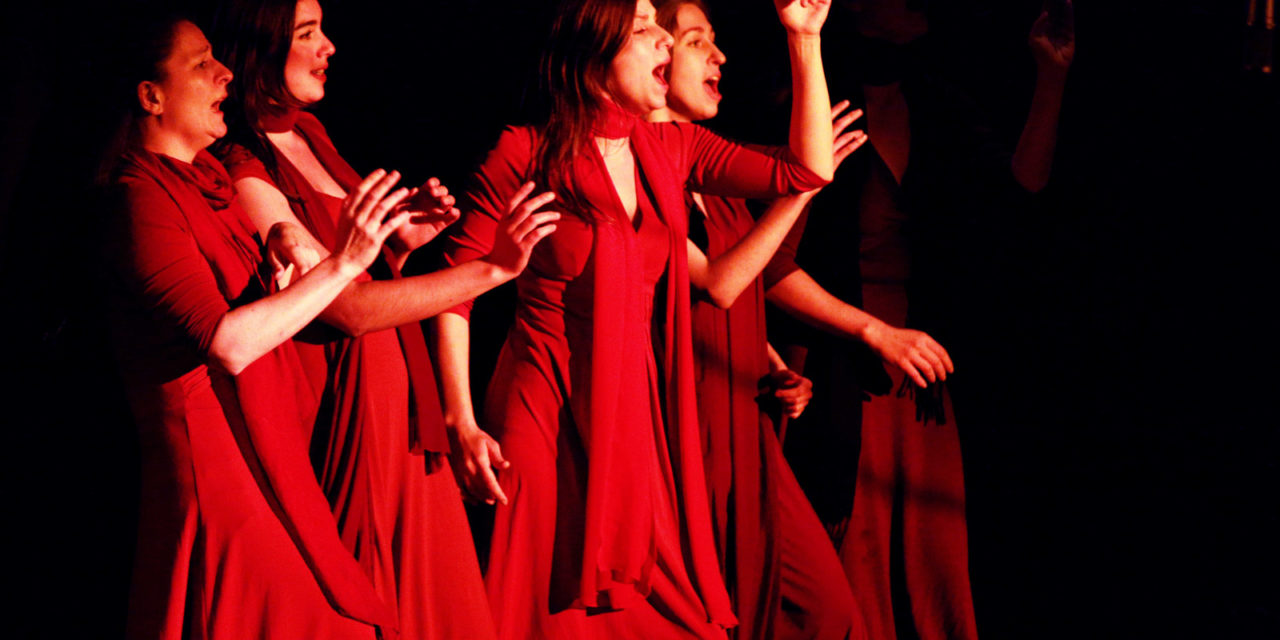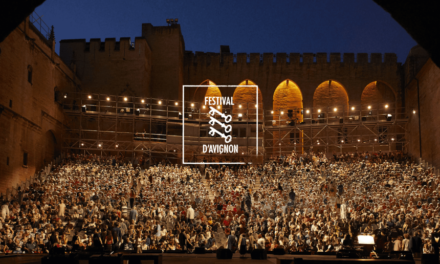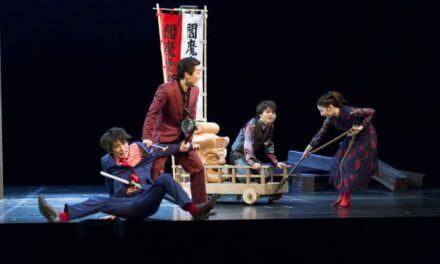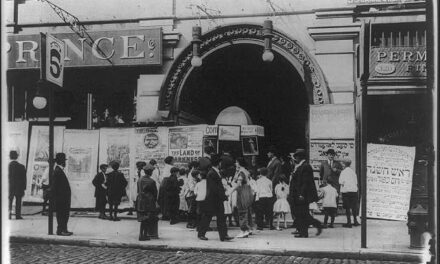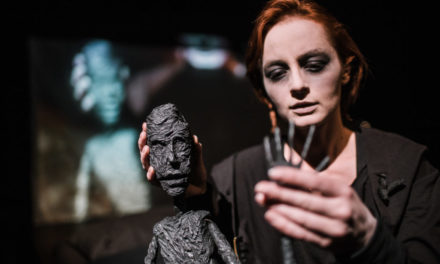Gardzienice is one of the most innovative and influential theatre companies in Poland. Founded in 1977 by Włodzimierz Staniewski, the company presented legendary “evening performances” to village communities in eastern Poland and organized expeditions in various parts of the world. Widely acclaimed by Susan Sontag, Tadashi Suzuki, Andre Gregory and SE Gontarski, Gardzienice toured many global theatre centers including La MaMa Experimental Theatre Club in New York, the Barbican Centre in London, the Meyerhold Centre in Moscow and Vahdat Hall in Tehran. But Staniewski’s work has aimed not only at establishing international reputation of a physical and vocal mastery of his ensemble but also at developing research and educational programs directed to student actors and theatre-makers from Poland and abroad.
The younger generation of Gardzienice collaborators contributed immensely to the overall success of the annual International Festival of Wandering Theatres. Held between September 28th and October 1st, 2017 in the recently rebuild premises of the company, the festival revolved around the theme of the wedding and celebrated the 40th anniversary of what is at present officially named the European Centre for Theatre Practices “Gardzienice.” Indeed, situated in the remote countryside some 30 kilometers from the city of Lublin, the eponymous village has developed into one of the iconic centers of European – or perhaps global – theatre. The festival gathered musicians, theatre practitioners, theoreticians and enthusiasts of many nationalities and all generations.
Gardzienice: Generator of Hope
It was intriguing to observe the work of trainees and graduates of the Academy for Theatre Practices “Gardzienice”. Not only did they fulfill administrative and organizational obligations but also performed, improvised, practiced and played football. Maciej Gorczyński, a young director from Kraków, who has collaborated with Gardzienice for years, was given a chance to present his skills in a number of ways. The English language performance inspired by the second act of Stanisław Wyspiański’s The Wedding, which opened the festival on Thursday, involved students of Rose Bruford College (London) and more experienced actors of Gardzienice. It emerged from a two-month workshop that was “curated” by Staniewski with an increasing role of Gorczyński. Unmistakenly Gardzienice-like style of the performance explored the extensive physical collaboration between actors and the sonic potential of the ensemble.
Slightly different skills were exercised by Gorczyński later that evening. The presentation of the 13th Academy for Theatre Practices was shaped in a rather amusing way as a “five-minute history of ‘Gardzienice.’” Young actors were given the chance to parody teaching habits of their masters and to mock iconic performances of the past. The on-stage narrative of the two “peasant women” led us chronologically from allusions to Evening Performance and Sorcery through images rooted in The Life Of Archpriest Avvakum and Carmina Burana to renditions of more recent Metamorphoses, Elektra, the two Iphigenias and Pythian Oratorio. The jovial energy of young performers culminated in the unforgettable parody of cheironomy, i.e. the language of gestures. Witty and well-crafted as it was, Gorczyński’s piece succeeded in confronting the burden of the company’s grand history with an unrestricted power of youth. The concise history of the company was jovially acclaimed – after all, many a member of the audience could recognize on stage their past selves.
The third performance by Gorczyński – Letters to Milena – offered yet another aesthetic style. Its dream-like quality was suggested already by the backstage drawing of the tree and the moon that dominated over the stage design. The entrance of an actor with the circle of a mirror hiding the head furthered symbolic implications of the intimate story based on Franz Kafka’s letters to Milena Jesenska. The aesthetics of allusion and understatement was strengthened by interweaving the intriguing musical quality of the performance with images created by modern dancers. True, not all decisions seemed well-thought – e.g. the puzzling intrusion of the black and white film – but, in principle, this piece should suggest independent artistic path pursued by Gorczyński.
Two other young directors who worked within the framework of Gardzienice: Generator Of Hope pursued their own paths. Radosław Stępień’s intellectual scrutiny of Dostoyevsky’s Mating employed a traditional style of acting in depicting rather static debate on moral issues. In contrast, in The Wedding Night – a music drama based on The Street Of Crocodiles by Bruno Schulz – Jan Lech explored dramatic potential of musical experiments. As the program informed us, the performance was “composed” rather than directed. Static image dominated over the playing area. The leading performers were mainly singing, a half of the stage was occupied by the musicians, and one female character was lying throughout in a bed. Having said that, I need to stress that The Wedding Night was an intriguing experiment putting on the verge semantic quality of the performance. These were certainly nerves – not the intellect – that were decisive for triggering the interest of the audience.
Guests from here and there
The theme of the wedding was originally treated by the guests from abroad. One-Eighth Theatre from Ankara, offered a performance inspired by the work of both Stanisław Wyspiański and Stanisław Ignacy Witkiewicz (Witkacy). The particular role was given to Witkacy’s The Madman And The Nun. There appeared scenes reflecting Turkish wedding ceremonies of traditional and contemporary character, which was echoed in performers’ clothing (the old-style wedding dress of the bride vs. the grotesque male pink ballerina). Directed by Daniel Irizarry, the show ended up in trans techno music that evoked a wedding of today. In contrast to that, Hutsuls’ musical band that arrived from Verkhovyna, Ukraine, delivered a most traditional folk rituals that were to depict Hutsuls’ wedding ceremony. There was “a young couple,” food and vodka sharing – audience included – as well as the ancient costumes, music, and dance (e.g. huculka, arkan, triesunka and reszto). Led by Mykoła Iljuk, the performers not only aimed at recreating shepherds’ wedding celebration but also invited the audience on stage. Whereas Włodzimierz Staniewski, Marcin Mrowca, Ireneusz Guszpit and others were invited to participate in the rite of “pownycia” (i.e. “collecting gifts and money from the guests”), the entire audience could enjoy the Hutsuls’ folk dance that ended up the entire ceremony.
As it happens in such occasions, there was time for more official speeches, letters, and honors, delivered by representatives of various authorities, including the ministry of culture and the office of the president of Poland. The official opening of the festival finished with a concise speech by Staniewski himself. Even though it was directed to all those who were gathered, the founder of Gardzienice focused primarily on the younger generation of theatre-makers, providing them with some elementary advice, as for example to avoid the traps of one’s ego.
The supper was served, then, by local women on the ground floor of the palace. The everyday engagement of the Rural Women’s Group (“koło gospodyń wiejskich”) illustrated the degree Staniewski’s company is embedded in the village community. In the meantime, we could walk around the exhibition rooms. There were lists of events undertaken by Gardzienice – year by year – covering the walls of a large hall. There were photographs of those who collaborated with Gardzienice for long – the so-called “pillars” – and of those who were part of the company for shorter time – i.e. “meteors.” You could spot faces of people who after leaving Gardzienice established some of the most prominent companies, including Tomasz Rodowicz (Teart Chorea), Krzysztof Czyżewski (Ośrodek “Pogranicze”), Jarosław Fret (Teatr Zar) and Anna Zubrzycki and Grzegorz Bral (Song of the Goat Theatre). Two other halls hosted screen presentations of film recordings, selected decorations, a book exhibition and large-scale photographs.
By placing this multi-layered exhibition in the impressive building of the palace, the company laid emphasis on the genius loci of the center. As Staniewski stressed more than once, the rebuilding of the premises was the opus magnum of his creative career. Indeed, the scale of work put in re-creating the premises of Gardzienice is impressive. During the festival, the performances were presented in four different venues: the palace, the granary, the shed and the main outbuilding. The center offers two gardens – the Japanese one and the magic one. (The latter was packed with butterflies!) Together with the park and the meadow, these leisure grounds were particularly tempting through the Indian summer of the festival. Needless to say, all these facilities must come as a shock for those who remember the severe conditions of Gardzienice’s dilapidating ruins before 2013.
The radical change in the comfort provided by the center was one of the themes mentioned in guests’ addresses that were scheduled each day at noon. On Friday, Zbigniew Benedyktowicz – the general editor of the Warsaw quarterly “Konteksty” – discussed whether such transformation should be considered a betrayal of the original ideas of a poor theatre. He concluded that there is surprising consistency in Staniewski’s overall enterprise. Professor Michael Earley of Rose Bruford College insisted the center has turned into “international imaginative space” that continues to challenge more commercial understanding of theatre. He noticed that even though the buildings seem to form a museum, they are “a living factory of imagination.” The final speech of Krzysztof Miklaszewski was delivered in a far more jovial tone. The former actor of Tadeusz Kantor played on numerous ambiguities of Staniewski’s conduct and ridiculed some of his well-known features.
On Saturday, Philip Arnoult – director of CITD – focused our attention on the hope provided by Gardzienice in the dark times of contemporary politics all around the globe. Alison Hodge, an actress, shared with us memories from her work with the company and enumerated British theatre makes and teachers that owe some inspiration to Gardzienice. The names of Emma Rice, Katie Mitchell and Professor Paul Allain were mentioned. The letter read by Dr. Farin Zahedi praised the visionary “architect of the vast organization and one’s imagination.” The Saturday session ended with music and singing provided by the leaders of the Norwegian theatre Stella Polaris – Per Spildra Borg and Merete Klingen.
On Sunday, Professor Richard Gough placed Gardzienice in the context of Polish alternative theatre of the 1970s and 1980s – and he dared to mention the forbidden name of Jerzy Grotowski – and stressed the extraordinary ability of Staniewski to orchestrating a gathering. Ian Watson postulated that the legacy of the company is to be found not in the productions but in the bodies and voices formed by this community. Michał Klinger, a Christian orthodox theologian, was far more pessimistic in regard to the question of legacy as he claimed that the spirit and ethos of Gardzienice’s work will disappear with people who lived through this experience. These sessions were quite appropriately finished by an extraordinary violin improvisation provided by Volker Biesenbender.
A gathering of performative liveness
It is unquestionable that the première of Gardzienice’s latest performance The Wedding – Wyspiański – Malczewski – Konieczny, along with the concert Wyspiański By Konieczny (The Wedding And Other Dramas) were scheduled as the central events of the festival. Yet, I would like to conclude this report by mentioning one unexpected happening. At one point in an evening, when all could watch a loop presentation of the 1999 film “Save Gardzienice!” by Krzysztof Miklaszewski, Włodzimierz Staniewski gathered, near the entrance to the palace, his past and present performers, together with Volker Biesnbender and other musicians. Staniewski ordered to mute the film and orchestrated what developed into an unforgettable improvisation of choral singing, unorthodox scales, playing violins, drums, and other instruments. It was all accompanied by the shamanic dance of Per Spildra Borg and interwoven with the film images of Joanna Holcgreber, Mariusz Gołaj and Maciej Mrowca that were visible on the wall in the background. This was performative liveness at its best. This was the most apprising experience that proved unmistakeable skills of Staniewski and his people. True, the physicality of sonic polyphony that Gardzienice is capable of enlivening remains the matter of experience rather than description. Whatever we gathered to celebrate, it was created there and then.
The full programme and a short film documentary is available at:
http://www.gardzienice.org/en/40th-Anniversary-Festival.html
This post was written by the author in their personal capacity.The opinions expressed in this article are the author’s own and do not reflect the view of The Theatre Times, their staff or collaborators.
This post was written by Tomasz Wiśniewski.
The views expressed here belong to the author and do not necessarily reflect our views and opinions.

